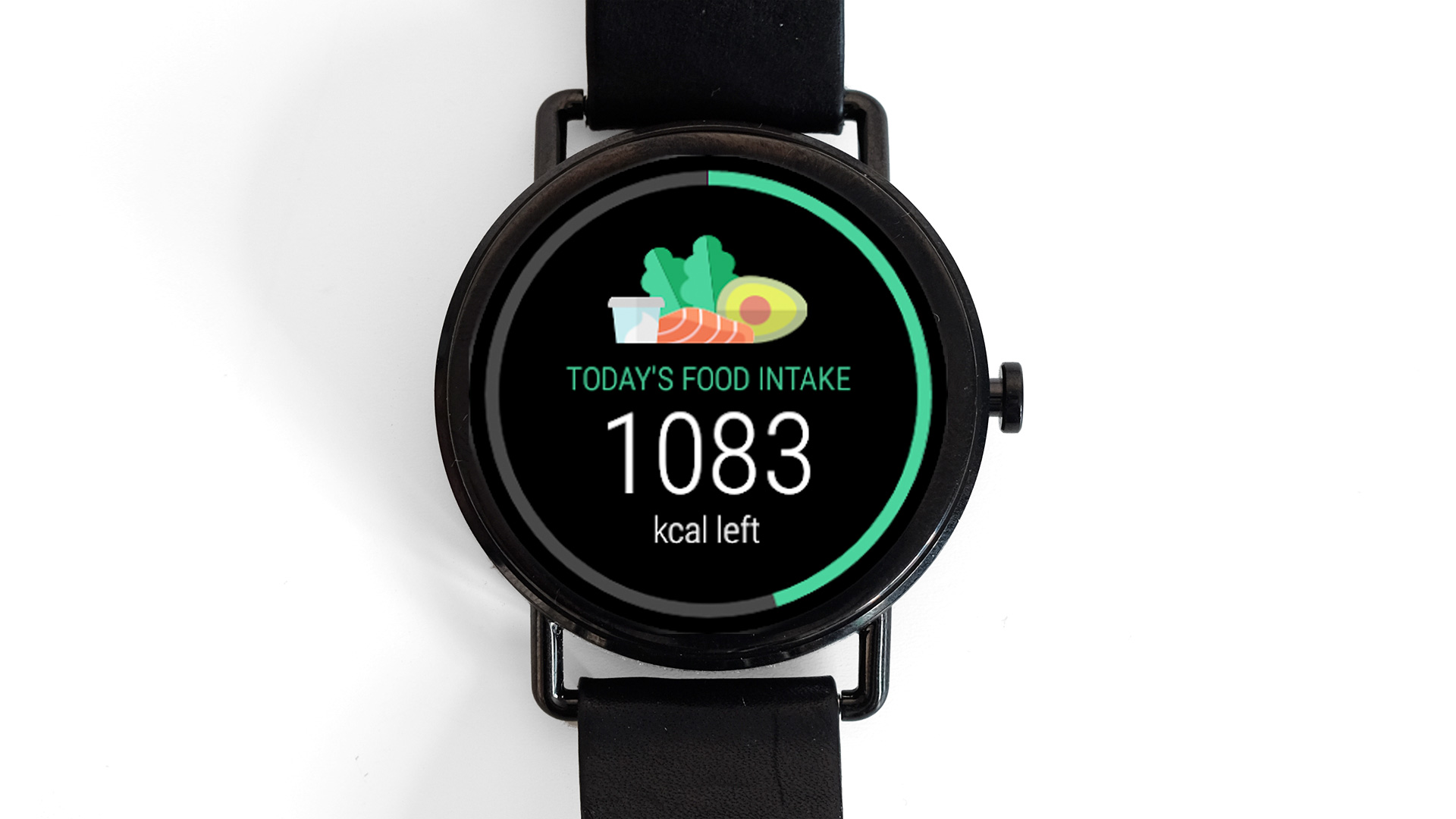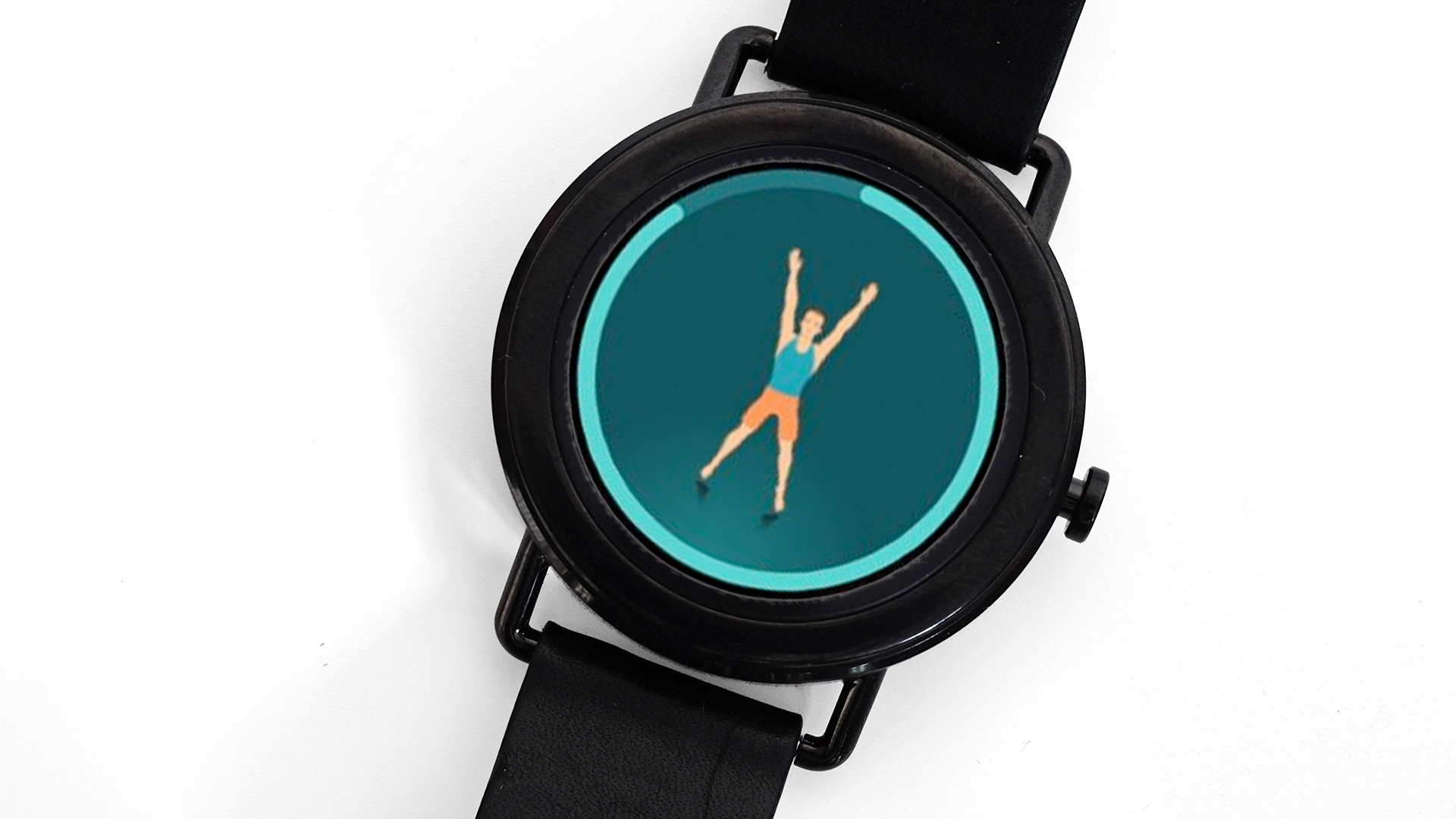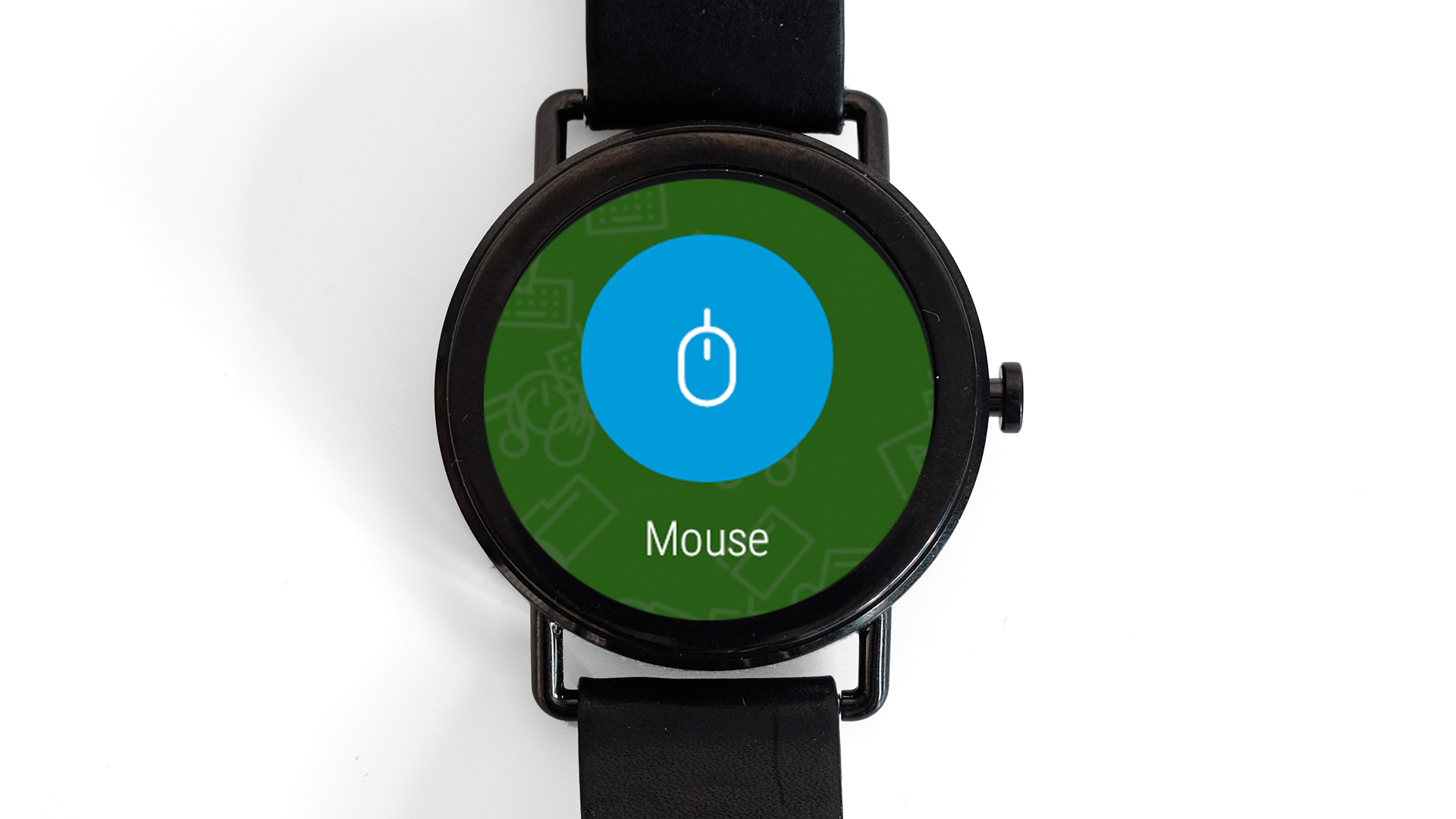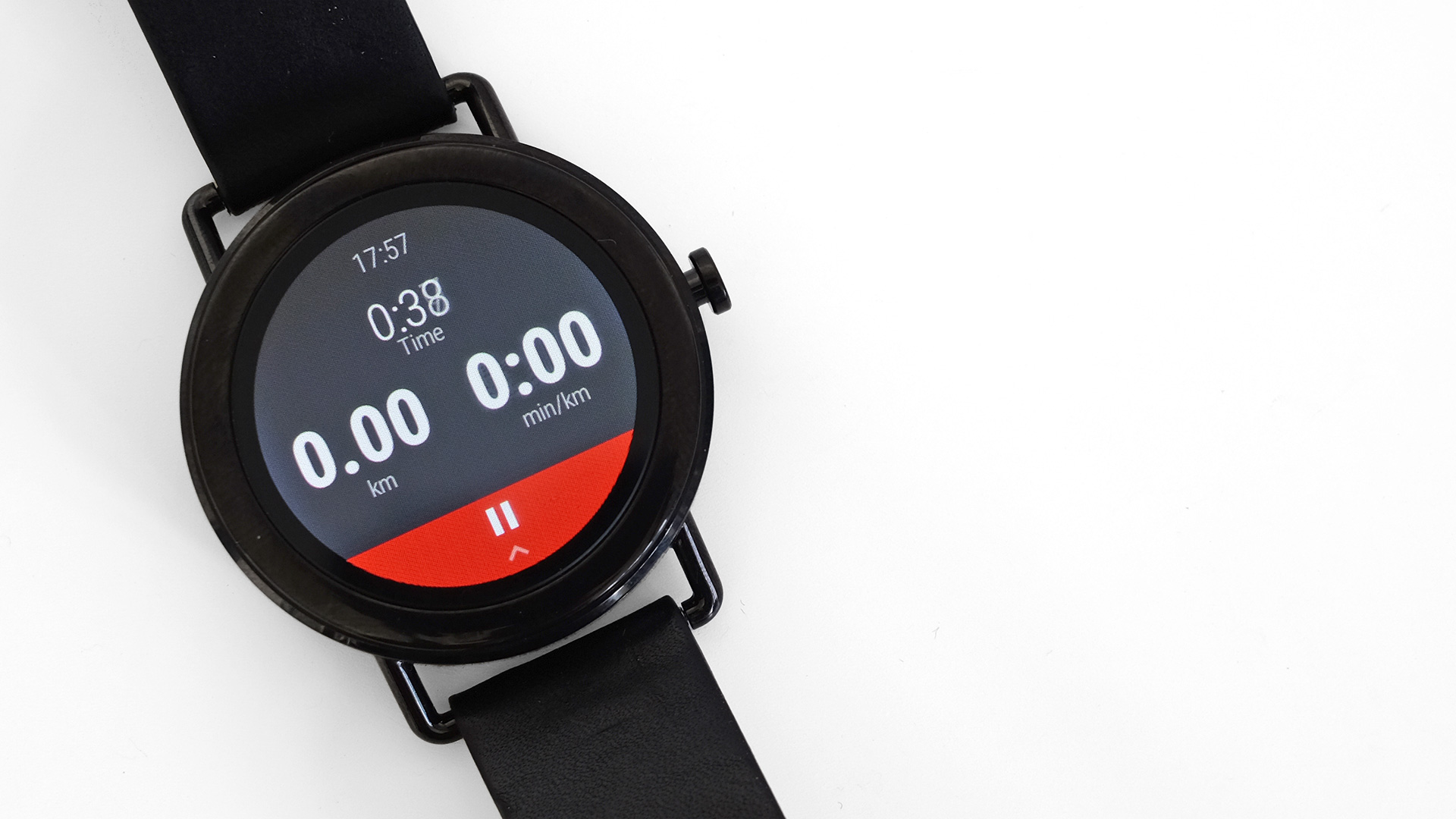Several of the best Wear OS apps come pre-installed on watches. Google Maps, Google Fit and Play Music offer the smartwatch essentials, and do the job well.
But what else is there? We’ll level with you. Wear OS’s app ecosystem is in a sorry state.
In the past few years there’s been little progress, and some of our original favorites aren’t even supported anymore. TripAdvisor? Gone. Wear Mini Launcher? It doesn’t support newer watches.
As we half-expected when modern smartwatches appeared, phones are still much better at doing most things. However, there are several Wear OS apps worth trying if you want to use your watch to do more than just the baked-in basics.

Lifesum
- Lifesum
- Free
Maintaining a food diary is tricky at the best of times. Get too into the idea and it can become a bit obsessive, and most other people find it chronically boring.
Lifesum’s Wear OS app is a decent way to stay somewhere in-between. It’s a very stripped-back version of the full phone app, intended to let you log your food, probably either just before or just after you eat it.
All the fine detail has been vacuumed-out. You don’t flick through mile-long menus that feature every brand and scrap of food in the supermarket.
There are just a handful of options for breakfast, lunch, snacks and dinner. And for the main meals, you just choose 'small', 'medium' and 'large' portions, which you need to correlate with the rough number of calories involved.
None will cover a splurge on a large Pizza Hut pizza for one, but if you find one of those in front of you, just write it off as a cheat day. Lifesum has nothing for you.
Open the app and you’ll see the number of calories you have remaining. You can also log the number of glasses of water you drink, and it will tally the minutes of exercise you do.
The Lifesum app is in a slightly tough spot. It doesn’t have the specificity to work for those after fairly accurate calorie counting. However, if like many of us you find meal-recording too much of a time-consuming chore, the Wear OS version is worth a try.

Citymapper
- Citymapper
- Free
Urban navigation app Citymapper has been around on Wear since 2015. It hasn’t changed all that much since, but is still one of the few essential Wear OS downloads, at least for those who use the phone app.
For those new to the service, Citymapper offers journey planning between places in major cities. You can get routes on foot, by car, by taxi or, the most important, using public transport.
The major appeal is the way Citymapper digs into train, bus and tram tracking systems, so you can see by-the-minute when yours is meant to arrive. And this is what the Wear OS version of the app is useful for.
When you’re waiting in the cold for a bus that never seems to show, this app will at least tell you how much misery is left. Flick through the app’s various screens and you can also see the number of stops, and a map of where you need to get to for any on-foot sections.
It has all the important mid-journey parts of Citymapper. However, if you want to go anywhere but the 'Home' and 'Work' locations set in the main app beforehand, you have to take your phone out.
This is not a standalone app, which seems fairly obvious when you consider the always-on data required. However, it is kind of great.

ParKing
- ParKing
- Free
Sometimes, the simplest apps are the most useful. ParKing lets you record where you parked your car. As such, you won’t have to spend 45 minutes looking for it outside IKEA, its location having been wiped from your memory after three hours of queuing to buy shelving units and meatballs.
Boot the app and you simply press a 'car' button to log the location of your vehicle. You’ll then see a Google Maps-style pinpoint of where it is.
Little controls let you zoom in and out of this map view, and you can flick around the location using the touchscreen.
ParKing feels a bit like a mod for Google Maps. But if you own a car and like the “keep it simple, stupid” school of design, this one is worth checking out. It’s free too, with no in-app purchases.

Google Keep
- Google Keep
- Free
If you want an app that just lets you look at a shopping list on your wrist, try Bring!. However, Google’s own Keep is designed for all sorts of notes, and is perfect for daily to-do lists or even checking over draft emails or reciting some notes.
It works much as it does on your phone. You’ll see a list of your existing notes when you run the app, and then can either jump into one of those or start a new one.
When you’ve written a note, you can set a reminder for it at a certain time, unpin it from your Keep home screen or archive it. It’s a clean, simple app, like the best parts of the Google suite.
You can make lists as well as plain notes too, and tick off items. We’ve been using Keep on a Wear OS watch like this, as a way to track a daily to-do list. While it may not be quite as satisfying as ticking off a box on a piece of paper, it does avoid the ever-recurring search for pen and notepad.
Any problems? Google Keep is a strictly functional app. There’s no visual gloss to it, which some may find off-putting. The phone app is more visually pleasing, and being able to customize the color theme in the watch app would be a neat extra.

Accuweather
- Accuweather
- Free
There’s a good chance you’ll have stumbled upon Accuweather already. It’s one of the most popular weather apps, and a Wear OS staple.
The watch version comes in two halves. There’s an analog-style watch face, which has three customizable slots into which you can bung three bits of weather data. And then there's the app proper.
In the app you just need to supply the location you want weather data for, and you’ll then see hour-by-hour reports. Or reports for the days coming up if that’s what you’re after.
The watch face in particular is handy. And not bad-looking either.
As you might expect, the app is relatively basic, and lacks features seen in the phone version. There’s no radar view that lets you look at rain clouds on a world map, for example.
There’s no multi-location support either. If you just want one location’s weather data that’s fine, but if you need to switch between two or more, you have to use the location search function. Typing in place names all the time can feel like a waking nightmare.
However, this is the go-to weather app for Wear OS, and a very handy way to see if it’s raining later without asking Google Assistant. Not all of us want to start talking to our wrists every day.

Seven Minute Workout
- Seven Minute Workout
- Free or $9.99/£9.99 per month for premium
This is one of the most useful standalone Wear OS apps. It’s a quick, neat way to get a guided workout before you go to work. Or, hey, even at work if you’re ambitious.
You’ll see animations of the exercises you’re meant to perform. Nicely animated ones too. By default, these exercises come in 30-second bursts, with short recovery rests in-between. During these you’ll see a preview animation of the next move to prepare for.
7 Minute Worksout’s animations are great. They give the app a professional look that most Wear OS apps don’t have. However, you probably shouldn’t try to learn the exercises from scratch off a 1.5-inch screen. It’s the combination of vibrate feedback and visuals that makes the app work as well as it does.
Once you’ve used it a few times you should only have to look at the screen for about 20 seconds in the seven minutes. The rest of the time you can just use the vibrate buzzes, which let you know when it’s time to stop and get ready to switch to the next exercise.
Use this as a standalone app and you can try a few basic circuits, enough to wake you up before you go to work. However, download the phone app, then subscribe to the $9.99/£9.99 per month premium service, and you can access many more. Yoga stretches, Pilates, and sets that work out a particular part of the body are all in there.
Favorite them in the phone app and you can then run them on your watch. Any bad points? The whole concept of the seven-minute workout, other than the time limit, is that the only equipment used is a chair. It’s not for the hardcore crowd.

Wear Casts
- Wear Casts
- Free
There are a few podcast apps for Wear OS, including phone-favorite Podcast Republic. However, Wear Casts is the current best of the bunch if you want to do more than just control a phone podcast player on your wrist.
Wear Casts lets you search for podcasts using the app’s podcast directory or the search function. It uses the standard Wear OS options of voice input or the virtual keyboard, which can be a pain when some podcast names aren’t even real words.
But that’s not Wear Casts’ fault.
When you’ve found a podcast, you add it to a favorites list, which makes it show up on the app’s 'home' display. You can flick through episodes, play them over Bluetooth headphones, and even download them for offline use - great for exercise.
Wear Casts is also one of the more stable, fast Wear OS apps, making it a real pleasure to use.
The only painful part is getting your favorite podcasts logged in the app. However, there’s a way around this too.
Wear Casts must be one of the few Wear OS apps where there’s a phone version, but it’s a companion to the watch software. Not the other way around.
Use the Wear Casts phone download and you can search for and add podcasts, so you can avoid that tiny Wear OS virtual keyboard. It took us several minutes just to type “John Hodgman” into the thing.

Unified Remote Full
- Unified Remote Full
- $3.99/£3.89
Smartwatches are great for quick, simple interactions, not the kind of drawn-out stuff we never thought we’d do on a phone in 2009. And now do every day.
Unified Remote is a puppet master of these kind of quick controls. It’s a remote app that lets you plug in over 100 different kinds of control. You can control Spotify or Netflix from your wrist, turn your computer off and even use the watch’s screen as a trackpad. You add extra features like little modules.
So you can control everything in your house through your watch? Not quite. Unified Remote can control software on your PC, but not instances of Spotify and Netflix on your phone or, say, PS4.
If you have an entertainment PC in your living room, this app is great. It’s handy if you plug a laptop into your TV too. You can control Windows, Mac and Linux systems, but not other platforms.
The Unified Remote team does say it is working on getting the platform to control iOS and Android devices, though, which would make it even more useful.

Zombies, Run!
- Zombies, Run!
- Free or $3.99/£3.69 a month, $24.99/£23.49 a year for the pro version
We’ve recommended the full phone version of Zombies, Run! for years. But it only came to Wear OS at the tail end of 2017.
Some of the TechRadar crew love running. But if you find it a total chore, an app like this can help.
Zombies, Run! maps your runs into the context of a zombie survival story, not just a Google Maps journey view. It feels a little like an audiobook that uses your run progress to determine when you should hear the next segment.
It won’t take over your whole run either. You can play music or a podcast in the background, and the app will take over when it needs to.
Over the days and weeks, your runs represent missions, many of which involve picking up the essentials and delivering them to the characters in the Abel township. It’s the story’s encampment of zombie apocalypse survivors.
You can 'play' Zombies, Run! for free, and after the first few missions new ones unlock at a rate of one per week. Pay for a subscription and you can play as many of the 300-plus missions as you like. It’s more fun than a standard couch-to-5K.

RunKeeper
- RunKeeper
- Free or $39.99/£29.99 per year for premium
A while back Endomondo was one of the top Wear apps. But it has not been updated to support Wear 2.0, which tells us a lot about how many people were using the Wear OS version.
RunKeeper survives, though, and it lets you run without taking your phone out, as long as your watch has built-in GPS.
It shows you stats as you run, and there are some battery-saving display tweaks to help save your watch’s stamina. And you can use it for free.
For many, the non-paid version will do the trick. Upgrade for £8.99/$9.99 per month, or a much more attractive $39.99/£29.99 per year, and you get training plans, broadcasting of your runs on social media (this will need a phone) and a feature that compares your workouts, so you can track progress better.
If you don’t upgrade the only real question is whether RunKeeper is actually much more useful than Google Fit, which nowadays is a great little Wear OS run tracker in its own right.
from TechRadar - All the latest technology news http://www.techradar.com/news/best-wear-os-apps
No comments:
Post a Comment